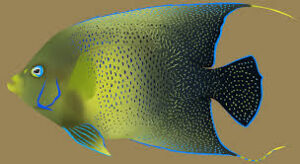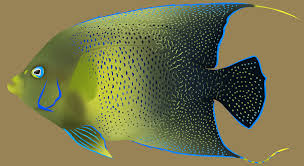The Meaning of Dragons in Mythological Stories of Love

Throughout the annals of mythology, dragons have often been portrayed as powerful, mystical beings that symbolize various natural forces—strength, wisdom, fear, and protection. However, in many cultures, dragons also appear in love stories, adding depth, complexity, and even transformative power to the narrative. Whether they are seen as protectors, adversaries, or enigmatic beings capable of invoking passion and devotion, dragons play a unique and profound role in mythological tales about love. This article delves into the meaning of dragons in mythological stories of love, exploring their symbolism and influence across different cultures and their impact on the lovers they encounter.
1. Dragons as Guardians of Love and Lovers
In many mythological stories, dragons are depicted as fierce guardians who protect not only treasures but also the object of the protagonist’s affection. These tales often involve a hero or heroine undertaking a perilous journey or mission to rescue or win the love of a beloved, with the dragon serving as an obstacle to be defeated or tamed. The dragon’s role in such stories is often to test the sincerity of the hero’s love or to safeguard a sacred love, making the dragon a key figure in the romantic narrative.
In Greek mythology, the tale of Jason and Medea illustrates this idea. Medea, a powerful sorceress and the daughter of King Aeëtes, falls in love with Jason. However, to win her love and gain the Golden Fleece, Jason must first overcome a dragon that guards the fleece. The dragon, while not actively malevolent, serves as a challenge that Jason must face. The dragon’s presence symbolizes both the danger and the necessity of overcoming obstacles for true love, a common theme in many mythological love stories.
Similarly, in Norse mythology, the Völsunga saga tells the story of Sigurd, a hero who is tasked with slaying the dragon Fafnir in order to gain riches and a ring that will bring him power. However, the real significance of Sigurd’s conquest lies in its connection to his love for Gudrun, whom he later marries. The dragon’s death marks the beginning of a tragic love story, where the themes of betrayal, vengeance, and the consequences of love play out. Here, the dragon is both a literal and metaphorical representation of the trials and challenges lovers must endure to secure their bond.
2. The Dragon and the Love Transformation
In certain mythologies, dragons are symbolic of transformation, representing the power of love to change or evolve. In these stories, the dragon’s presence is tied to an individual’s journey of personal growth, particularly in the realm of love. The dragon may act as a catalyst for change, forcing the lover to confront their fears, desires, or past to experience a deeper form of love.
In Chinese mythology, the dragon is a symbol of strength, power, and transformation. The Dragon King’s involvement in love stories often conveys a sense of uniting two disparate forces or beings, such as the story of the Dragon Prince and the mortal maiden. In these stories, the dragon represents the ability of love to transcend boundaries, transforming the mortal lover into something greater, often offering immortality or divine qualities as part of the union. The dragon, thus, becomes a metaphor for the transformation that love can bring, whether through the unification of souls or the transcendence of earthly limitations.
In Indian mythology, dragons (often referred to as serpents or Nāga) also embody this transformative aspect of love. The Nāga are often guardians of love, fertility, and wisdom, and their role in stories is frequently associated with themes of spiritual elevation. One such myth involves the god Shiva, who is depicted as having a serpent around his neck, symbolizing both his power and his connection to eternal love. The Nāga’s role in these stories is often that of a protector, ensuring that love, once it has begun, will flourish and evolve into something more profound.
3. Dragons as Adversaries in Love Stories
In contrast to their role as guardians, dragons in many mythological stories also serve as adversaries in love, representing the challenges that lovers must overcome to unite. These dragons often embody fear, jealousy, and destructive forces that threaten to tear the lovers apart. Overcoming the dragon becomes a symbolic act of conquering those inner demons and external threats that seek to destroy love.
One of the most iconic examples of a dragon as an adversary in a love story comes from European folklore, particularly the legend of St. George and the Dragon. In this story, St. George, a knight, is tasked with slaying a fearsome dragon that is terrorizing a town. The dragon demands sacrifices, and the king’s daughter is chosen as the next victim. St. George’s arrival and his battle with the dragon serve as the climax of the tale, which is rooted in both love and self-sacrifice. St. George’s victory over the dragon is symbolic of love conquering fear and death, with the dragon representing not only physical danger but also the social and political forces that seek to thwart true love.
In Persian mythology, the dragon also serves as an enemy that must be defeated in order for love to flourish. In the story of Rostam and Tahmineh, the hero Rostam must defeat a dragon to rescue his beloved. The dragon in this case embodies the social and physical barriers that keep the lovers apart, symbolizing the necessity of overcoming external forces to achieve true unity.
4. Dragons and the Concept of Unrequited Love
In certain myths, dragons are also associated with unrequited love, symbolizing the longing and desire that cannot be easily fulfilled. These dragons often embody the separation between two lovers or the inaccessibility of love due to societal, familial, or spiritual barriers. In these stories, the dragon is not necessarily an enemy but rather a symbol of unattainable love or the unreachable ideal.
A well-known example can be found in Japanese mythology, where the dragon often appears in stories involving star-crossed lovers. One such tale involves Orihime and Hikoboshi, two lovers separated by the Milky Way and only able to meet once a year. In some versions of the story, a dragon guards the path to the lovers, preventing them from easily crossing and reuniting. The dragon, in this case, represents the obstacles that prevent true love from being realized, creating a sense of longing and emotional tension that adds to the drama of the story.
Similarly, in Greek mythology, the myth of Perseus and Andromeda involves Perseus rescuing Andromeda from a sea monster, which some versions of the story depict as a dragon. Here, the dragon represents the separation between the lovers, as Andromeda is chained to a rock, awaiting her fate. Perseus’s quest to free Andromeda from the dragon is symbolic of the journey to overcome the forces that keep lovers apart, whether those forces are literal or metaphorical.
5. Dragons as Symbols of Eternal Love
In some mythologies, dragons transcend the role of adversaries or guardians and take on the symbolism of eternal love itself. These dragons are not merely creatures that influence the outcomes of love stories, but are instead seen as embodiments of the enduring nature of love. These stories often focus on love that is unbreakable, transcendent, and eternal—often beyond the boundaries of life and death.
In Chinese mythology, the concept of long-lasting love is often associated with the dragon and phoenix—two mythical creatures that symbolize harmony and unity. The dragon represents the male energy (Yang), while the phoenix symbolizes the female energy (Yin). Together, they represent the perfect union of opposites, a relationship that is both balanced and eternal. In these stories, the dragon does not merely protect or challenge love but serves as a symbol of the eternal bond that love can create between two souls.
Similarly, in Celtic mythology, the dragon is sometimes associated with the eternal bond of lovers, where it is believed that a pair of dragons are destined to live and love together forever. These dragons, often depicted as intertwined, symbolize the intertwined fates of lovers, their love eternal and unbreakable by time or circumstance.
6. Conclusion: The Multifaceted Role of Dragons in Love Myths
Dragons play a profound and multifaceted role in mythological love stories. Whether they serve as fierce guardians, formidable adversaries, or symbols of transformation and eternal love, they add depth, complexity, and significance to the narratives they inhabit. Through their involvement in these stories, dragons symbolize the power, trials, and beauty of love in all its forms—protective, challenging, transformative, and eternal.
From Greek legends to Chinese folklore, European sagas, and Japanese tales, the presence of dragons in love myths serves as a reminder of the forces—both natural and supernatural—that shape the course of love. They highlight the idea that love is not just an emotion but a force of nature that, like a dragon, can protect, transform, and sometimes even destroy. In the end, dragons in love stories are more than just mythical creatures; they are metaphors for the complexities of love itself—its beauty, its trials, and its enduring power.


